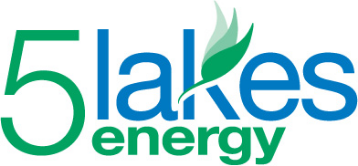The wind industry has come a long way in Michigan and in the nation. From the passage of a comprehensive energy statute in 2008 that included Michigan’s Renewable Portfolio Standard, costs have dropped so that wind is now the cheapest generation option, and one of the cheapest additions to the generation fleet even without the federal PTC. What’s more, the amount of power generated from the technology in the machines has increased to capacity factors that rival baseload – over 40% for some new farms in Michigan. Five minute incremental forecasting has improved so dramatically that MISO has had over 25% of its footprint satisfied with wind generation a few years ago and Iowa has routinely handled 40% wind. Michigan utilities and energy industry met the RPS and are frankly, able to build right past it.
Wind has proven itself while playing against a stacked deck of federal supports for other energy sources.
But questions about the future remain.
While Michigan was meeting the RPS, Governor Snyder set our policymakers along a path of deliberation. In November of 2012, the governor offered his first Special Message on Energy and the Environment which focused on eliminating energy waste and keeping energy policy adaptable for the future. The tenets he laid out then – affordability, reliability, adaptable and protecting of the environment – are the same that were explored through the year of listening sessions around the state. The pillars are the same as he outlined just last week when discussing his approach to energy in 2015. I applaud the Governor for this focus, and the verdict is in: wind energy in Michigan can deliver affordable, reliable, and sustainable energy in a way that makes our energy mix more adaptable.
Ongoing discussions within the industry today include the following topics.
– There is a continued need to talk about siting. The Thumb has a large majority of the wind farms in Michigan because it also has the best wind. How can Michigan make good decisions in concert with local communities about balancing economic development with the non-economic needs of the community?
– What does the Clean Power Plan mean as policy makers consider the path forward for the state? It is critical that EPA lay out how states will get credit to clear the path for additional policy measures now.
– The fits and starts of policy are terrible for business. How much more contraction will take place because of the lack of certainty? Here the RPS was mostly met last year. Without any signal on policy, we have already seen business pack up and move on. That trend will likely continue unless we do something to keep them here.
– Another recurring theme has been the rising tide of corporations investing in renewable energy. Big corporations investing include Google, Microsoft, Ikea, and home team companies from large to small including GM, Herman Miller, Steelcase, Dow Corning, and Bell’s Brewing.
– In Michigan, both incumbent utilities say that wind fits into their future portfolios due to improving economics and better technology.
– There is a desire to act on legislation this year.
These themes are important, and need to be thoughtfully dealt with by policymakers, by industry leaders, and by Michigan communities.
Make no mistake: wind energy is good for Michigan. As the lowest cost option, it’s helping to reduce the highest electricity rates in the Midwest. As locally-generated power, it’s delivering real benefits for Michigan communities while creating jobs for Michigan workers. And we can do more. Much more.
Now is the time to act. Wind power fits neatly into Michigan’s future generation portfolio by virtue of improved forecasting, accelerated engineering designs, increasing capacity factors, decreasing costs, and protection of one of our most precious resources – water.
Now is the time to build policy on the deliberative foundation.
Because by any measure, the 2008 energy law has been a resounding success. More than $2 billion in direct investment as a result of Michigan’s wind industry. Millions in local tax revenue. And a resurgence of Michigan’s manufacturing base, with Michigan firms helping to supply the parts that make Michigan wind happen. And all at a fraction of the cost that was anticipated just seven years ago.
Indeed, it’s difficult to think of a more impactful, more cost-effective public policy measure that’s been enacted in the last twenty years. More local energy, more local jobs, all with less pollution and at less cost. Truly, what’s not to like?
So the evidence is in. The numbers have been crunched. Wind works for Michigan. The last decade has delivered real results. Now let’s make sure the next ten years are even better.
